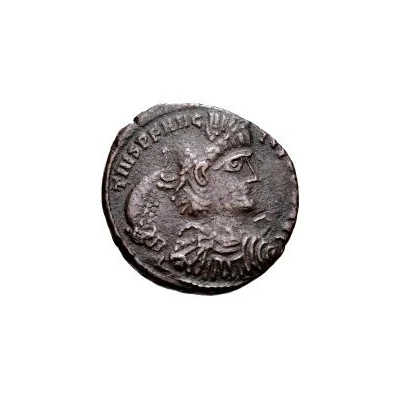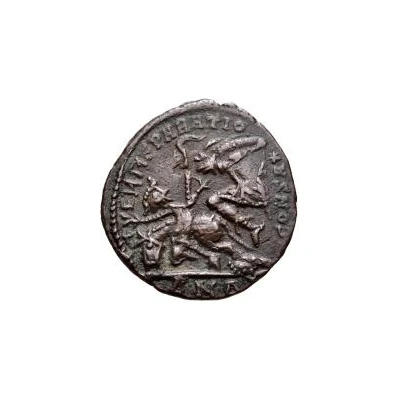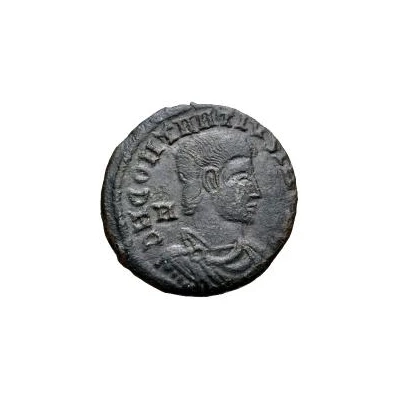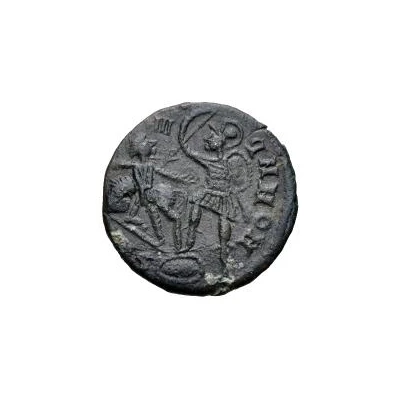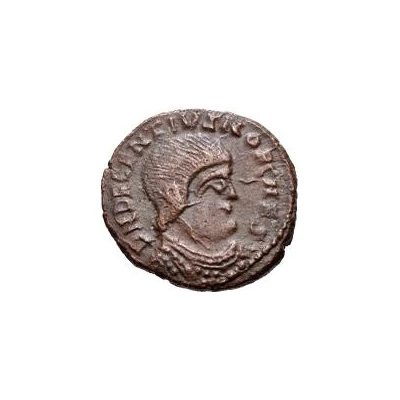
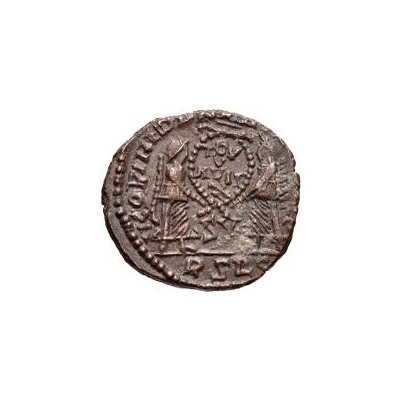

© Classical Numismatic Group, Inc.
Æ In the name of Decentius
| Bronze | 4.92 g | 20 mm |
| Issuer | Uncertain Germanic tribes |
|---|---|
| Type | Standard circulation coin |
| Years | 351-425 |
| Currency | Solidus (circa 301-750) |
| Composition | Bronze |
| Weight | 4.92 g |
| Diameter | 20 mm |
| Shape | Round (irregular) |
| Technique | Hammered |
| Demonetized | Yes |
| Updated | 2024-10-04 |
| Numista | N#153994 |
|---|---|
| Rarity index | 97% |
Reverse
Two winged Victories holding wreath containing stacked legend, all surrounded by legend.
Script: Latin
Lettering:
VICTORIA DD NN HVC IT CH SV
VOT
V
MVLT
X
RSL
Translation:
Victoria Dominus Noster Augustus Et Caesar / Votis Quinquennalibus Multis Decennalibus
Victory to our Lord, August, and Caesar / Vows for the fifth anniversary and more for the tenth
Edge
Plain
Comment
This coin is said to be struck from the mid-4th to early-5th centuries. With the prototypes for these coins struck in Lugdunum/Lyon, and with those types being first struck in 351, that is the most-likely beginning date for this entire type of AE struck by an Uncertain Germanic Tribe.The denominations of bronze coins that are unknown to numismatists are referred to as Æ (AE), followed by the coin's diameter. The Æ part simply means the coin is made of a base alloy, and because the diameter of these coins is never exactly as intended, different numbers can appear after the Æ for the same type.
The exact lettering of the surrounding legend may vary.
Interesting fact
One interesting fact about this coin is that it features a rare and unique design, with a blend of Roman and Germanic elements. The obverse (front) side of the coin depicts a bust of Decentius, a Roman general, while the reverse (back) side features a stylized image of a Germanic warrior. This blending of cultures reflects the complex history of the time period, when the Roman Empire was interacting with and influencing the Germanic tribes. Additionally, the coin's bronze composition and relatively small weight suggest that it was used for everyday transactions, making it a practical and accessible piece of currency for the people of the time.
